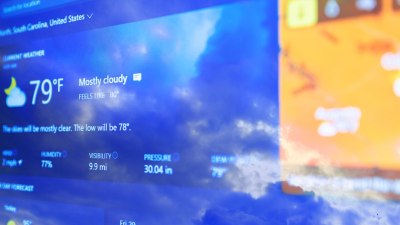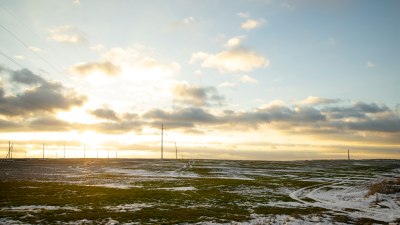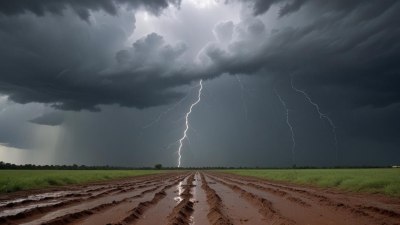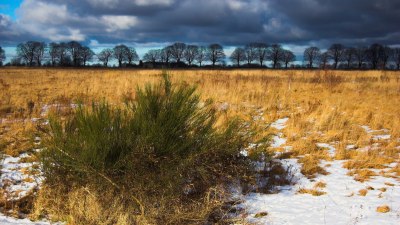Why the Wind Is Basically Nature’s Gossip Spreader
Explore how the wind acts as nature's communicator, sharing seeds, sounds, and stories across distances.
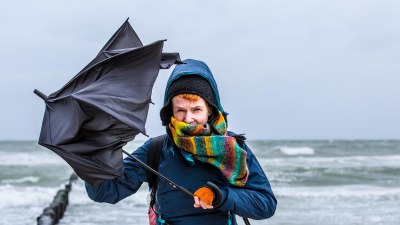
The wind is often seen as a mere physical phenomenon, a natural occurrence characterized by moving air. However, when closely examined, it takes on a more vibrant role in nature's ecosystem that goes far beyond just a gust or a breeze. The wind can be viewed as nature's gossip spreader, carrying whispers of life, tales of flora and fauna, and facilitating the interactions within various ecosystems. In this article, we delve deeper into how wind operates on many levels to disseminate information, stories, and resources across vast distances. We will explore its impact on plant and animal communication, seed dispersal, and even the interconnectivity between different habitats.
Wind as a Carrier of Seeds and Pollens
One of the most profound roles played by the wind is that of a seed carrier. Many plant species have evolved mechanisms to utilize the wind for seed dispersal. Think of dandelions, for instance. Their fluffy seed heads catch the breeze, allowing them to float away from the parent plant to new territories. This adaptation gives them a fighting chance by reducing competition with the parent plant and allowing for broader genetic diversity. The wind’s ability to transport seeds across miles enhances plant species' survival and adaptability, effectively allowing plants to colonize new areas.
Pollination Through the Air
While many people immediately think of pollinators like bees or butterflies when considering how plants reproduce, the wind has its own role to play in this process. Wind-pollinated plants, such as grasses and many trees, rely on air currents to move pollen from one flower to another. This passive method of pollination might differ from the more colorful nature of insect-assisted pollination but is equally effective in ensuring plant reproduction. In fact, wind pollination can contribute to the genetic health of a plant population by increasing the likelihood of cross-pollination over short distances. The wind, indirectly, is thus a matchmaker within plant communities.
The Soundscape of Nature
In addition to carrying seeds and pollen, the wind acts as a medium for sound transmission across ecosystems. When the wind blows through trees, it creates rustling noises that, much like gossip, convey various messages. Birds, for instance, utilize different vocalizations to communicate with each other in a dense forest. The wind can carry these calls over long distances, informing other birds of the presence of mates, territory boundaries, or even warnings of predation. The whispers of the wind blend with the sounds of nature, creating a tapestry of communication vital for survival.
Climate Conversations
Wind is not just an agent of gossip among plants and animals; it also plays a crucial role in climate patterns and environmental shifts. The movement of air currents can determine weather patterns, affecting moisture levels and temperature across various regions. In this regard, the wind is a storyteller of global proportions, sharing climatic conditions that could affect entire ecosystems. Scientists and weather forecasters study wind patterns to predict droughts, rainfall, and other critical climatic phenomena. These predictions can guide agricultural practices and inform communities on how to prepare for adverse weather.
Spreading Seeds of Change
The wind's ability to carry particles from one location to another does not stop with seeds and pollen. It also has the potential to spread invasive species. From the perspective of ecology, the wind becomes the vector through which non-native plants can infiltrate new areas, often outcompeting local flora. These invasive species may alter habitats, affect the food chain, and create imbalance in local ecosystems. So, while the wind may help some species flourish, it can also contribute to the decline of others, telling a much more complex story about survival and competition in nature.
Wind's Role in Wildlife Communication
Beyond merely facilitating plant reproduction and spreading seeds, the wind carries whispers important to animal communication as well. Animals, notably many mammal species, utilize scents for communication. Wind disperses these scents, allowing animals to gather information about the presence of others, potential mates, and even food sources. Like a gossip network, the air carries these natural perfumes across distances, rationing information among competing species. Studies have shown that animals react to olfactory cues carried by the wind, underlining how interconnected life is in natural ecosystems.
Wind Energy and Its Impact
The wind's abilities also extend into the realm of human innovation, particularly through the harnessing of wind energy. Wind turbines are increasingly being utilized to capture the kinetic energy of the wind and convert it into electricity. This technological advancement echoes the age-old benefits of wind, transforming it from a mere gossip spreader into a powerful energy source. However, just like nature’s gossip can have both positive and negative outcomes, wind energy must be harnessed responsibly. The placement of wind farms can disrupt local ecosystems, impacting the very creatures that have depended on the wind for communication and sustenance. It’s essential that we find balance, producing energy while protecting the natural relationships intrinsic to ecosystems.
Reviving Ancient Wisdom
Throughout history, cultures have revered the wind and acknowledged its pivotal role in life and nature. Indigenous communities, in particular, have recognized the wind's ability to mediate relationships between species, often reflecting their reverence in folklore and rituals. Teachings around the sanctity of the wind remind us that each breath of air is imbued with life’s stories. As we navigate modern advancements, it’s crucial to honor these wise narratives rooted in our connection to nature.
The Future of Winds and Whispers
As we consider the many roles of the wind in our lives and ecosystems, it becomes evident that it is far more than just moving air. The wind is a collector and distributor of stories, secrets, communications, and resources that maintain the delicate balance of ecosystems. Whether it’s through seed dispersal or the transmission of sound and scents, the wind is present in and integral to the natural world. Understanding its functions empowers us to appreciate our surroundings deeply and to recognize the importance of maintaining the health of our ecosystems. As environmental challenges loom in our future, the wind’s storytelling abilities may well become more vital than ever. By keeping an open dialogue with nature's gossip spreader, we may navigate forward sustainably, ensuring the health of our planet for generations to come.

